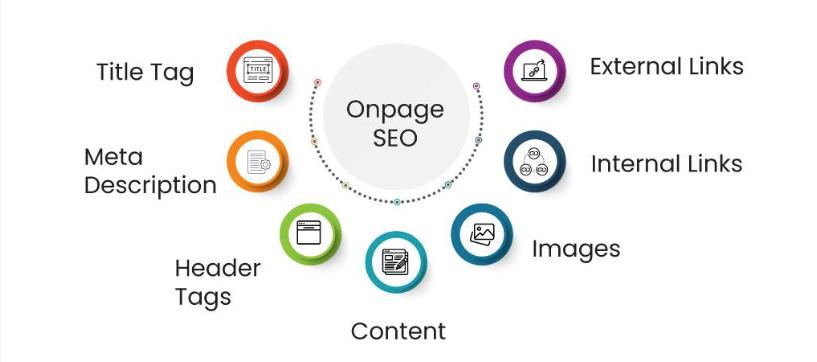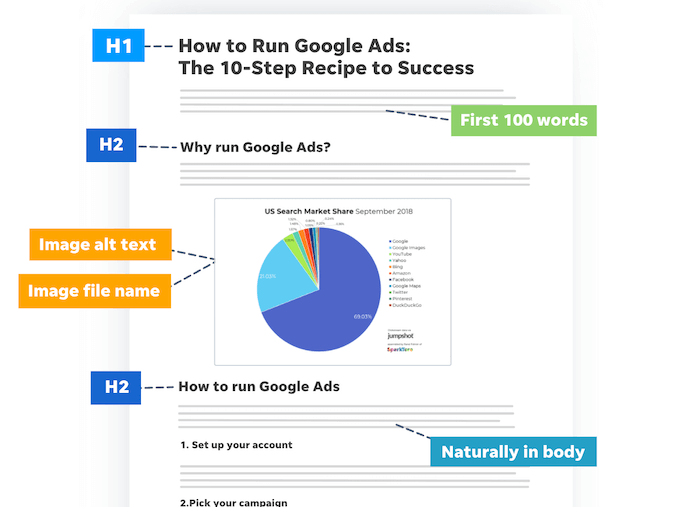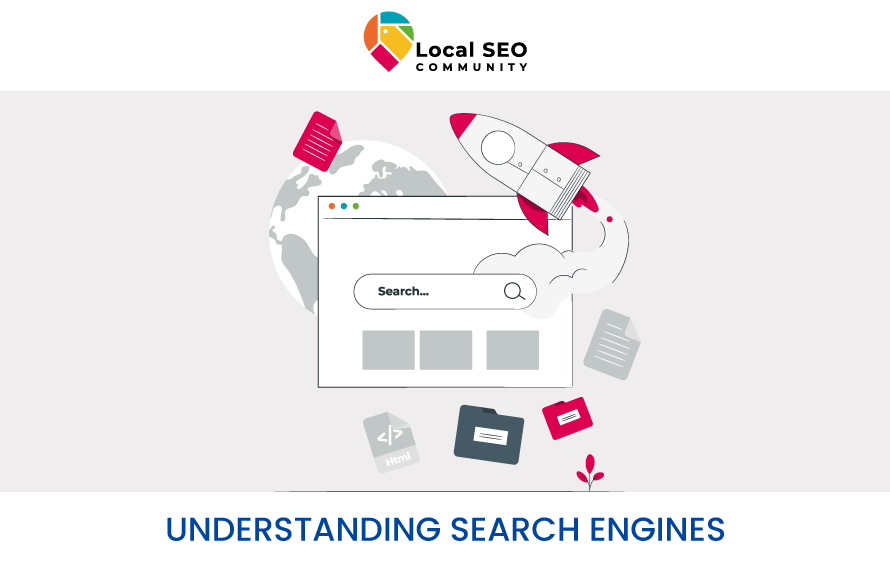On-Page SEO for Local Businesses: Maximizing Local Search Visibility Through Website Optimization
On-page SEO is a fundamental aspect of local search optimization, playing a pivotal role in how effectively a business is presented in local search results. This process involves optimizing the content and structure of a website to boost its relevance and visibility for location-based queries. Key on-page elements like meta tags, headers, content, and images are crucial in signaling a business’s locality and relevance to search engines. We will explore essential strategies for optimizing these elements to enhance a local business’s presence in search results, attracting more targeted customer traffic.
Understanding On-Page SEO for Local Businesses
Definition of On-Page SEO in the Context of Local Businesses
On-page SEO refers to optimizing web pages to improve a site’s search engine rankings and earn organic traffic. In the context of local businesses, this involves tailoring page content, tags, images, and HTML code to focus on geographic-specific elements and keywords. This optimization is essential because it helps search engines understand the local relevance of a business, enhancing its visibility to local consumers. Effective on-page SEO for local businesses is not just about keyword insertion, but also about strategic content creation that resonates with a local audience. This approach increases the likelihood of attracting visitors seeking specific services in specific areas, making it a key aspect of on-page SEO for local businesses.
The Relationship Between On-Page SEO and Local Search Rankings
The role of on-page SEO in local search rankings cannot be overstated. When local businesses optimize their sites effectively, they send a clear signal to search engines like Google that their content is relevant and valuable to users searching for local services. This is particularly important because search engines prioritize content that best fits the user’s locality during searches. By aligning on-page SEO strategies with local search intent, businesses can effectively compete on a local scale, ensuring that their content is seen by the right audience at the right time.
Key On-Page Factors That Influence Local SEO
Understanding the key on-page factors influencing local SEO is crucial for local businesses. Firstly, including location-based keywords in strategic places like titles, meta descriptions, headers, and throughout the body text is a must. Secondly, ensuring that contact information is consistent across the website and other platforms reinforces local relevance to search engines. Optimizing the website’s URL structure to include location-specific keywords can boost local search rankings. Lastly, embedding a Google Map on your contact page, genuine customer testimonials, and locally relevant images can enhance user engagement and trust, boosting SEO effectiveness. When combined effectively, these elements create a robust on-page SEO strategy that can significantly improve a local business’s search engine visibility.

Optimizing Website Content with Local Keywords
Importance of Local Keywords in Content Optimization
Local keywords are essential for optimizing a website to capture the attention of a community-based audience. These keywords help tailor the site’s content to meet local users’ specific needs and search behaviors, ensuring that the business appears in search results when potential customers are looking for related services or products in the area. Utilizing local keywords effectively increases the relevance of a website to local search queries, which is crucial for businesses that operate on a regional rather than a national scale. Additionally, the strategic use of local keywords can enhance the business’s presence in local directories and maps, making it more accessible to the community it serves.
Strategies for Researching and Selecting Effective Local Keywords
Researching and selecting effective local keywords involves understanding the market and the specific language your potential customers might use when searching for your services. Start by listing basic keywords related to your business and then modify them to include local identifiers, such as the city or neighborhood. Tools like Google’s Keyword Planner and Google Trends can help identify the most effective local keywords in drawing traffic. It’s also helpful to analyze competitors’ websites to see what keywords they target in your locality. This research will help refine your keyword list and provide insights into your area’s market dynamics and customer preferences, allowing for a more targeted and effective SEO strategy.
Best Practices for Integrating Local Keywords into Website Content
Integrating local keywords into website content should be done thoughtfully and strategically to avoid overstuffing, which can negatively impact SEO. Incorporate these keywords naturally into high-impact areas such as titles, meta descriptions, headers, and throughout the body of your content, like blogs and landing pages. Make sure that using local keywords enhances the readability and relevance of the content, providing real value to the reader. Including local terms in alt text for images and in the URLs of specific pages is also beneficial. Each page should focus on a particular topic or service, paired with a relevant local keyword, to effectively optimize each part of the website for local search. This focused approach ensures that the content not only appeals to search engines but also resonates with the local audience, thereby driving more targeted traffic.
Meta Tags Optimization for Local SEO
Overview of Meta Tags and Their Importance in SEO
Meta tags play a crucial role in search engine optimization (SEO), acting as indicators that provide search engines with essential information about the contents of a webpage. These tags, which include meta titles and descriptions, do not appear on the page itself but are embedded within the page’s code and can significantly influence both click-through rates and the page’s search engine rankings. For local businesses, meta tags are invaluable for targeting local customers by integrating geographic-specific data. When local keywords are included in meta tags, they enhance the website’s relevance to local search queries, helping businesses appear more prominently in localized search results.
Tips for Writing Effective Local SEO-Focused Meta Titles and Descriptions
Crafting effective meta titles and descriptions is essential for optimizing a local business’s online visibility. The meta title should be concise and include a primary local keyword to attract local search traffic—ideally placing the keyword towards the beginning of the title. The title should also clearly describe the page’s content while engaging enough to encourage clicks. Meta descriptions, while not directly impacting rankings, influence user engagement by providing a brief overview of what to expect on the webpage. This description should include local keywords naturally, offer a compelling reason for users to visit the page, and call to action, such as visiting the store or calling for more information. Keeping meta titles and descriptions within the recommended character limits (50-60 characters for titles and 150-160 characters for descriptions) ensures they display properly in search results.
The Role of Schema Markup in Enhancing Local Business Visibility
Schema markup is a form of microdata added to a website to help search engines understand the content’s context. Implementing localized schema markup for local businesses can significantly enhance visibility in search results. This might include information such as the business’s physical address, operating hours, and phone number within the schema for a local company. Additionally, the schema for events, reviews, and products can enrich the entries in search results, making them more attractive to potential customers. By providing search engines with structured and detailed information about a business’s local relevance, schema markup improves rankings. It increases the chances of appearing in rich snippets and other enhanced search results features. This visibility is crucial for attracting more traffic and customers to a local business.
Headers and Structured Content for Local SEO
The Significance of Headers (H1, H2, H3) in Local SEO
Headers are vital in organizing content and improving SEO, especially for local businesses aiming to increase online visibility. Headers such as H1, H2, and H3 help search engines understand the structure and hierarchy of content on a webpage, which is essential for indexing. For local SEO, headers emphasize geographical relevance and support local search rankings. An H1 tag should typically include the primary local keyword as it denotes the page’s main title and is a strong signal to search engines about its focus. Subsequent headers (H2, H3) can further detail services or benefits, integrating secondary local keywords and geographic specifics, which helps segment content for better user and search engine readability.

Guidelines for Using Local Keywords in Headers and Content Structure
Local keywords should be incorporated into headers strategically to align with the user’s search intent and geographical queries. For instance, an H1 tag on a plumber’s service page might read “Reliable Plumbing Services in [City Name],” directly targeting local search terms. Subheaders can expand on this by highlighting specific services offered or areas served, such as “Emergency Plumbing in [Neighborhood Name]” or “Affordable Leak Repair Services.” Structuring content with these clear, localized headers boosts SEO and enhances user experience by making it easier for potential customers to navigate and find the information they seek. Moreover, structuring the content to include local landmarks, community news, or local customer testimonials within these sections can further solidify the connection to the area, providing more depth and relevance to local searchers.
Image Optimization for Local Search
The Importance of Images in Local SEO
Images significantly enhance the engagement and visibility of a local business online, playing a crucial role in local SEO strategies. They make a webpage more appealing, which can increase the time visitors spend on the site, thereby reducing bounce rates and improving search rankings. For local businesses, images also provide an opportunity to showcase their products, services, and business environment, which helps to establish credibility and attract local customers. Properly optimized images can appear in both image searches and Google My Business listings, providing additional pathways for potential customers to find your business.
Techniques for Optimizing Images and Enhancing Local Relevance
When optimizing images for local SEO, several key techniques should be considered. Firstly, file names should be descriptive and include local keywords where appropriate, which helps search engines understand and index the image content relevantly. For example, using a file name like “best-coffee-shop-downtown-austin.jpg” can improve the relevance in local searches. Secondly, alt tags should also contain local keywords to improve accessibility and SEO, offering context to search engines about the image content. Additionally, ensuring images are of a manageable size helps pages load faster, improving user experience and SEO performance.
Localizing Your Website’s User Experience
Adjusting the Website’s Design and Language to Appeal to Local Audiences
Tailoring your website’s design and language to resonate with local audiences is crucial for businesses targeting specific geographical areas. This involves more than just translating text; it means adapting the cultural nuances and local colloquialisms that resonate with the local community. For instance, imagery featuring recognizable local landmarks or cultural symbols can significantly enhance the local appeal. Additionally, ensuring that the language on the website reflects the local dialect or idioms can help form a connection with the audience, making the content more relatable and engaging. Such localization improves user engagement and boosts the website’s relevance in local search results, attracting more local traffic.
Importance of Mobile Optimization for Local Search
With the increasing prevalence of smartphones, mobile optimization has become indispensable, particularly for local search. Many local searches are performed on mobile devices, often by users looking for immediate information on the go, such as directions to a local business or opening hours. Ensuring your website is mobile-friendly with fast loading times, easy navigation, and clickable calls-to-action (CTAs) is essential. Mobile optimization affects user experience and search engine rankings, particularly after Google’s move to mobile-first indexing. A well-optimized mobile website helps capture this mobile-centric market, increasing visibility and potential customer engagement.
Creating a Local-Centric User Experience Through Design Elements and CTAs
Incorporating local-centric design elements and CTAs into your website can significantly enhance the user experience for local visitors. This includes using graphics and themes inspired by local culture, which can create a familiar and welcoming environment for the user. CTAs tailored to the local audience, such as invitations to visit in-store for a special discount available only to residents or promotions tied to local events, can also increase engagement. These tailored elements make the website more attractive and relevant to the local community and help drive conversions, as they resonate more closely with the users’ community identity and needs.
Conclusion
Localizing your website’s user experience is essential for effectively connecting with and engaging a regional audience. By adjusting your site’s design, language, and technical aspects to align with local tastes and behaviors, you enhance the relevance and accessibility of your online presence. Implementing mobile optimization ensures that your website caters to the growing number of users searching on the go, thus improving your visibility in local search results. Additionally, by infusing local culture into your design and tailoring your calls to action to meet your local audience’s specific needs and preferences, you create a more compelling and personalized user experience. These strategies boost local engagement and drive conversions, setting the stage for sustained business growth within the community.



